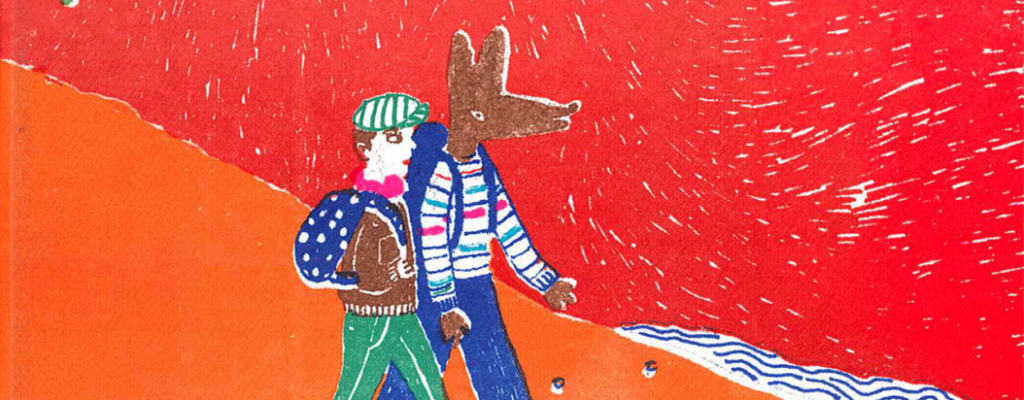Sally IngrahamFebruary 23, 2017NewsToday we have Adam Griffiths interviewing Guy A. Sims, Ronald Wimberly at Copacetic Comics, Sam Ombiri on categorization, a few other news bites, and our raft of daily comics!
—————————————————————————————————
Here in Pittsburgh last night we had a fantastic evening with Ronald Wimberly at Copacetic Comics. He spoke about his recent work, Black History In Their Own Words, and the origins of his Prince of Cats comic. He’s been in Pittsburgh a few days, checking out the Andy Warhol Museum and the Rowhouse Residency, and has plans to return soon. After nearly a month of traveling, though, it is high time for Ron to return to his New York City studio and dig into his next project. Good luck Ron!
—————————————————————————————————
Sam Ombiri here: There’s this thing where I say, or I think to myself, “I didn’t read comics as kid.”But wait, that’s not true. I think maybe I think this because I interacted with comics back then in a different capacity. The first statement suggests to me that I wasn’t into comics, but the fact is I’d jump at the chance to get my hands on a comic. There just wasn’t so much opportunity, and every opportunity was treasured (not exploited). Once my dad bought a Wahl razor and it came with a DVD that included a motion comic for the Uncanny X-Men #1. I watched that DVD with my brother many, many times. I wish someone told me back then that it was Jack Kirby, but wait, I wouldn’t have cared, as I didn’t interact with work that way back then. I just thought “This is great.” I didn’t care whether something superb would come out of one individual’s efforts and contribution.
In a way, I feel more naive now than I was back then, because I really have to hope that I come across great work in that aforementioned manner, whereas back then I didn’t mind sifting through trash. I was even attentive to it. With what I’ve heard of the auteur theory, it comes to my understanding as really naive in its nature. Of course work gets more valuable with a recognizable name – it brings context and possibly brings more reason and validation.
Haruki Murakami was saying America is so preoccupied with attaching isms to work, (like postmodernism, magical realism or K-Mart realism) instead of focusing on the story and he hopes that this trend doesn’t catch on in Japan. What I dislike about Murakami’s statement is that he acts like the way people in Japan interact with work is above that. I’m misinterpreting what he’s saying probably, but Murakami honestly doesn’t seem above making a quick statement like this. It’s not completely absurd to want to quickly quantify victory in an artistic medium, and unify those said experiences, however overly optimistic it might be, or to act as if an objective consensus might be reached.
There was a video that I can’t find where I heard Brian Chippendale say he doesn’t know what category Lightning Bolt is and he’ll just have everyone else decide what it is. A better attitude!
I’m fairly ignorant of the auteur theory, but it feels like the triumphs of say one auteur doesn’t come from the new found optimism (that because they have made good work in the past they can only make good work). They’re kind of happening independent of being associated with this call to arms to innovate – not that this association doesn’t help acquire certain needed resources. A work doesn’t thrive as a result of categorization, at least to my knowledge. – Sam Ombiri
—————————————————————————————————
Adam Griffiths interviews Guy A. Sims, co-creator of the Brotherman series, and talks about reading Brotherman as a kid in his most recent Zine Tree interview series. Adam writes:
“I had one, and only one issue of Brotherman as a kid, which I got from Haneef’s Bookshop — an afro-centric bookstore in downtown Wilmington, DE. The shop was across the street from where we went regularly to pick up takeout fried chicken. When we’d go to pick up food, I’d have to beg to be allowed to cross the street on my own to go over to Haneef’s and look at the comic books. It felt like such an extra effort; when we went to the mall, there was a comics shop, chock-full of mainstream superhero comics.
In America, young girls are given dolls that are designed to reflect their identities, to help them establish selfhood. Comics provides a similar mirroring experience for young boys – heroes matter. However, by the time I saw a Brotherman comic, I had already read Captain America comics of my brother’s. The suits had such a similarity (despite the lack of color in Brother comics), I’d sometimes stare at the drawings of Brotherman in this very very innocent way — not incredulously wondering if I’d somehow been duped into reading a clone comic, but perhaps so already utterly consigned to the hero myth of Captain America, that the internal differentiation between the two heroes was not a deliberation that I was capable of making. “
Guy A. Sims speaks about the political and other influences that surrounded he and his co-creator, artist Dawud Anyabwile, when they were making the Brotherman comic and the more recent Brotherman graphic novel:
“The influence of Brotherman is drawn from the experiences of me and my brothers going all the way back to our days growing up in Philadelphia and visiting our cousins in Jersey City, NJ. … The greatest influence was our home life, our parents, our siblings, and interactions in school and with friends. The politics of the times have always been consistent but our evolution as young men changed with times, eventually constructing the mindset that eventually created Brotherman. Of course, when you look at the art styling and reference, it is predominantly from the 90s but those who read into it will be able to see generational thinking and sensibilities in the writing and presentation.
In 2016, we released the Brotherman graphic novel, Revelation. Longtime fans will be able to tell the difference in style, in the writing, and most importantly, the presentation of the book. … While the story message is consistent, the time between issue #11 (1996) and the graphic novel (2016) is twenty years of personal growth, experience, skill development, and time to think critically about the direction of Brotherman. When we returned to Brotherman, we knew it had to be presented differently, to show how we have evolved as artists and how we looked at the world. …“
Read the rest of the interview HERE.
Check out another Guy A. Sims project, the webcomic K.E.I.S.H.A., which is written by Guy and drawn by Angael Davis.
—————————————————————————————————
Ben Passmore has a comic on The Nib about a movement in New Orleans to remove statues that celebrate, ahem, famous racists… Be your own symbol of freedom – and check out the comic HERE.
—————————————————————————————————
Bill Boichel writes about the new George Herriman biography by Michael Tisserand:
“Here, in Krazy: George Herriman, a Life in Black and White, author Michael Tisserand broadens the context of Herriman’s life further, to encompass large swaths of American history, society and culture, and in the process places Herriman’s life not only at the center of the history of comics, but at the crossroads of America itself at the dawn of the 20th century. While it has long been known that Herriman was born in New Orleans of mixed “Creole” heritage, with African as well as European forebears, the specifics had always been murky, at best – but no more! Tisserand, much of whose earlier writing focused on New Orleans, and who evidently knows his way around a variety of New Orleans archives, leveraged his preexistent knowledge, rolled up his sleeves and dug deep, tracing Herriman’s roots back to the 18th century as well as outlining much of his extended family history. The story includes telling details of much of what transpired in post Civil War New Orleans in order to set the stage for Herriman’s perents’ decision to uproot the family, move to Los Angeles and “pass” (as white), at which point the book’s subtitle, “a life in black and white” becomes eminently clear. ” – Bill Boichel
Read the rest of the review HERE and get a copy of the book from Copacetic Comics.
This event is still a ways off but here’s your first reminder, if you’re in the Pittsburgh area, to check out a presentation by Michael Tisserand at Point Park University on March 31st. He will be talking about the Harriman biography and there will also be screening of several rare Krazy Kat cartoons, which date back to 1916 and are among the very earliest examples cartooning cinema. The event is co-sponsored by The ToonSeum and Point Park’s Department of Cinema Arts. It is free and open to the public – put it on your calendar! More event details can be found HERE.
—————————————————————————————————
Announcing the Spring Semester of the Santoro Correspondence Course for Comic Book Makers!
Frank here: This semester has a rolling start date – it will officially start March 7th but I will continue taking applications past that date. I will make it work for your schedule. Just apply!
Applications received by February 26th will get 100 bux off!
The course is 8 weeks long – payment plans are available.
More details can be found HERE.
Email santoroschoolATgmail to apply
—————————————————————————————————
Blinkers – 2-23-2017 – by Jack Brougham
—————————————————————————————————
Suzy and Cecil – 2-23-2017 – by Gabriella Tito
—————————————————————————————————
Joanie and Jordie – 2-23-2017 – by Caleb Orecchio
—————————————————————————————————
Cozytown – 2-23-2017 – by Juan Fernandez
Share this page: [...]




